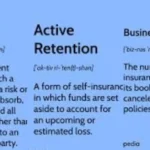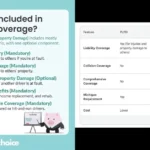In the realm of business, particularly in sales and marketing, leads are the lifeblood of growth. Companies depend on a steady flow of leads to fuel their customer acquisition efforts, convert prospects into buyers, and expand their revenue streams. However, when this lead flow is interrupted or significantly diminished, it can cause a ripple effect throughout the business, affecting not just sales performance but also long-term sustainability. This phenomenon is known as poor lead flow.
What is Lead Flow?
Lead flow refers to the steady stream of potential customers or leads coming into a business, generally through marketing and sales efforts. These leads could be individuals or organizations that show an interest in a company’s products or services. Lead flow can be seen as the top part of a sales funnel, where potential prospects are funneled down through engagement, conversion, and finally, purchase.
Maintaining a healthy lead flow is critical for a business’s growth, especially for companies that rely heavily on a consistent customer pipeline. Without new leads coming in, there is no fresh opportunity for the business to grow, and stagnant or declining sales can follow.
What Constitutes Poor Lead Flow?
Poor lead flow occurs when the quantity or quality of leads coming into the sales funnel is insufficient. This can result in sales teams having fewer opportunities to close deals, leading to a reduction in revenue. A poor lead flow can manifest in several ways, including:
- Lower number of inquiries or sign-ups: If fewer people are showing interest in your offerings, it means the lead flow is weak.
- Leads that are not well-qualified: You may still be generating leads, but if they don’t match your target customer profile, then the quality of these leads is poor.
- Longer sales cycles: If leads are stuck in the funnel for too long, it can create bottlenecks and slow down the flow of potential customers.
Causes of Poor Lead Flow
Several factors can contribute to poor lead flow, some of which may be internal processes, while others could be external market forces. Below are some of the most common causes.
3.1 Inadequate Lead Generation Strategies
An ineffective or outdated lead generation strategy is a common cause of poor lead flow. With new technologies, evolving customer preferences, and changes in communication channels, what worked a few years ago may not work now. If a business is not regularly updating its lead generation tactics, it may find itself struggling to attract leads.
3.2 Weak or Unclear Value Proposition
If a company’s value proposition is not clear or compelling, potential leads may not see the benefit of engaging. A weak value proposition can cause confusion or disinterest, leading to a reduced lead flow. Customers need to understand what makes your product or service unique and why they should choose you over the competition.
3.3 Poor Marketing Execution
Marketing efforts that fail to capture attention or deliver results can directly impact lead flow. This could be due to poor messaging, weak calls-to-action (CTAs), underperforming ads, or ineffective use of channels like social media, email, and content marketing.
3.4 Mismatched Target Audience
Targeting the wrong audience is a surefire way to experience poor lead flow. If your marketing and sales efforts are directed at individuals or businesses that don’t have an interest in your product or service, your lead flow will suffer. A mismatch between the audience and your offering can also lead to low engagement and conversion rates.
3.5 Inefficient Sales Funnel
A poorly constructed sales funnel that does not guide prospects smoothly through each stage can cause bottlenecks. If your funnel lacks clear steps or contains friction, it may deter leads from progressing towards a conversion.
3.6 Market Saturation or Competition
Sometimes, external forces such as increased competition or market saturation can make it more difficult to maintain a strong lead flow. When competitors flood the market with similar offers, it becomes harder to stand out, and lead generation efforts may produce diminishing returns.
Consequences of Poor Lead Flow
When lead flow is poor, the consequences can be severe and far-reaching. Let’s explore some of the key implications of poor lead flow for a business.
4.1 Decline in Revenue
A reduction in leads often results in fewer sales, which directly impacts a company’s bottom line. The fewer leads that enter the pipeline, the fewer opportunities sales teams have to close deals, ultimately causing a decline in revenue.
4.2 Decreased Sales Team Morale
Sales teams depend on a steady flow of leads to perform their jobs. When lead flow diminishes, they may become frustrated or demotivated. This can create a negative feedback loop where poor morale leads to decreased performance, which in turn leads to even fewer closed deals.
4.3 Increased Customer Acquisition Costs (CAC)
With fewer leads in the pipeline, the cost of acquiring each new customer increases. Marketing and sales efforts may need to intensify in order to attract leads, driving up costs. When the CAC rises, profit margins are squeezed, which can negatively impact financial health.
4.4 Limited Business Growth
Without a healthy lead flow, a business may struggle to grow. Leads fuel new sales, and without them, growth may stagnate. Over time, this can limit a company’s ability to expand into new markets, innovate, or compete effectively.
4.5 Disrupted Cash Flow and Financial Stability
Poor lead flow can also result in cash flow disruptions. When sales slow down, revenue declines, and cash reserves may begin to dwindle. This can make it difficult for businesses to meet operational costs, pay employees, or reinvest in growth initiatives.
Solutions to Poor Lead Flow
Fortunately, poor lead flow is not a permanent condition, and there are several ways to address it. The key is to identify the root cause of the problem and implement targeted solutions.
5.1 Strengthening Lead Generation Techniques
Revamping your lead generation strategy is often the first step towards fixing poor lead flow. This can include exploring new marketing channels, testing different types of content (e.g., webinars, case studies, and whitepapers), or utilizing paid advertising campaigns to attract new prospects.
5.2 Enhancing Marketing Campaigns
If your marketing campaigns are underperforming, it may be time to revisit them. Consider refining your messaging to better resonate with your target audience, updating your creative assets, or experimenting with new platforms such as video marketing or influencer collaborations.
5.3 Improving the Sales Funnel Process
The sales funnel should guide prospects smoothly through each stage of the buying journey. If there are inefficiencies or friction points, it’s essential to address them. For instance, introducing automation at key stages, optimizing your follow-up process, or creating more personalized touchpoints can help improve conversion rates.
5.4 Leveraging Data-Driven Insights
Data analytics can provide valuable insights into what’s working and what isn’t in your lead generation efforts. By analyzing data from your campaigns, sales funnels, and customer interactions, you can identify bottlenecks and optimize the process accordingly.
5.5 Aligning Marketing and Sales Teams
Misalignment between marketing and sales teams can exacerbate poor lead flow. Ensuring that both teams are working towards the same goals and using the same metrics can lead to better collaboration, more qualified leads, and smoother handoffs.
5.6 Leveraging Marketing Automation Tools
Marketing automation tools can help streamline lead generation and nurture processes. Tools like HubSpot, Marketo, and Salesforce enable businesses to automate lead capture, segmentation, and follow-up processes, resulting in improved efficiency and lead flow.
The Role of Technology in Overcoming Poor Lead Flow
Modern technology plays a significant role in improving lead flow. From customer relationship management (CRM) systems that help manage leads to artificial intelligence (AI)-powered tools that predict buying behavior, businesses can leverage a wide array of technologies to overcome poor lead flow challenges.
AI-driven tools, for example, can analyze customer behavior and suggest personalized content or offers to increase engagement. Additionally, chatbots can engage visitors on your website, answer questions, and capture lead information even when your sales team is unavailable.
Conclusion
Poor lead flow is a significant issue that can hinder a company’s growth, revenue, and overall success. By understanding the causes, consequences, and potential solutions, businesses can take proactive steps to address lead flow problems and revitalize their lead generation efforts. From enhancing marketing campaigns to aligning sales and marketing teams, there are numerous strategies that can help boost lead flow and drive business growth.
Leveraging the latest technology and data-driven insights, along with a solid understanding of your target audience, can also make a critical difference in overcoming poor lead flow. Whether you’re facing declining leads or simply looking to optimize your lead generation process, a comprehensive, strategic approach is essential for sustained success.











